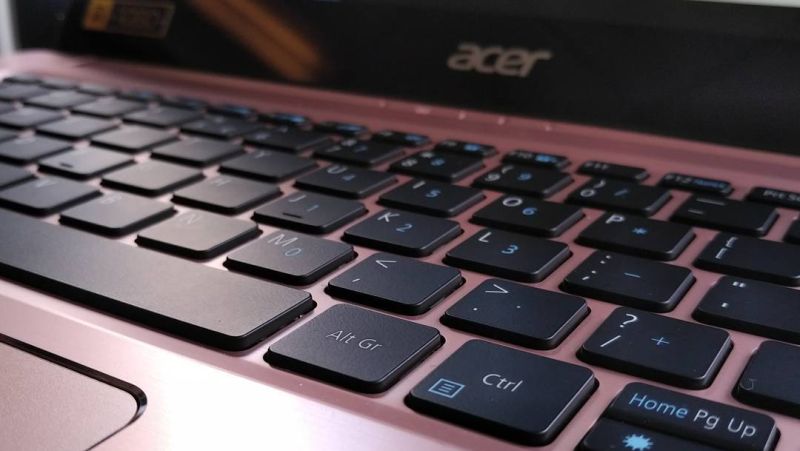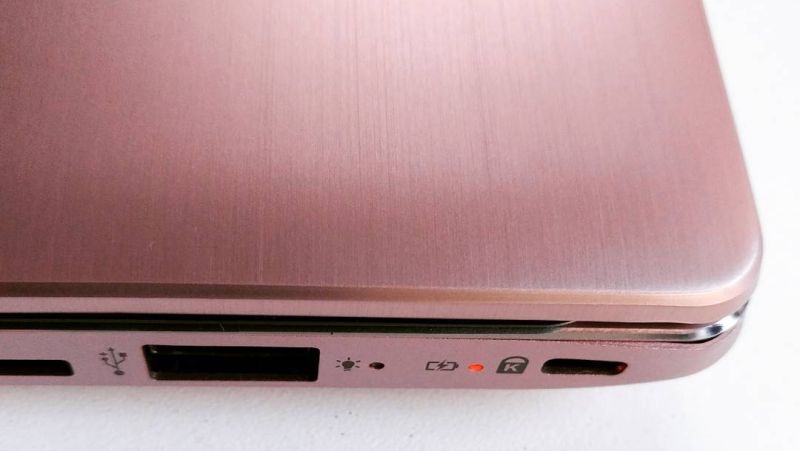WhatsApp’s 2025 update surge is in full motion and South Africa is once again at the front of the global test pool. With more…
Acer Swift 3 review: portable, punchy and pretty in pink

As tech reviewer, I’ve done the worst possible thing before penning this review: I read other journalists’ thoughts of the Acer Swift 3.
Usually, that’s a bad thing. Usually, others influence your thoughts or make you second guess your opinions. Often reading reviews beforehand rather shapes a review into something that you wouldn’t normally pen yourself. But this time, I’ve actually gained a bit of clarity.
Let me explain.
A few reviews I’ve perused suggest that the Acer Swift 3 is just another basement ultraportable trying its heart out to be a MacBook Pro. Others suggest that it misses a bevy of bells and whistles you usually find on a device like this. But I can’t agree. In fact, the Acer Swift 3 may be the most balanced device I’ve reviewed all year.
Let’s start with the aesthetics.
So yes, it might resemble a MacBook slightly, with its dark keys, piano-black bezels and shiny metal body, but it does have a few key differences. For one, it runs Windows. Besides that, obnoxious Acer logos are visible on the lid and at the bottom bezel. While “SWIFT” is unceremoniously chiselled into the hinge of the machine. All this makes it distinctive, but it’s not what I’d call ugly.

There’s also a fingerprint reader on the lower right hand side of the keyboard — perfect for insta-logon. And yes, it performed admirably when my hands were clean and dry. And that backlit keyboard certainly adds to the drama of the laptop when using it at night. Clicking away on it, the feel is decent, although travel is notably limited.
The trackpad is also finished in the machine’s body colour, and provides positive feel. But mistakenly left- or right-clicking happens far too often. You’ll soon lose confidence in the feel of the pad, and glance down before clicking, hindering your work flow.
In its rose gold finish, I enjoyed staring at my review unit for unnatural amounts of time. There’s a decidedly pleasing balance of contrasts going on here too, between the black and the pink. Notably, the machine also comes in a dark blue, cheap silver and Beyonce gold.
Its dainty styling matches its small footprint too. The screen is just 14-inches from corner to corner, which reduces the laptop’s size in-bag and on-lap. It’s compact enough to sit on an economy class seat tray, while light enough to not snap it in half.
Internally, the review version of the Acer Swift 3 featured a 14-inch 1920×1080 screen, a 7th generation Intel Core i7, 8GB of RAM, a 500GB SSD and integrated Intel 620 graphics. That sentence will please you if you’re more interested in battery life than raw performance.
You’re not going to enjoy editing a heavy Premiere project on it, but you’ll get away with more than three Firefox instances, Google Play Music, Google Chrome running TweetDeck and a multi-chat program at the same time. It’s perfect for multitaskers, but less so for heavy content editors.
During my usage, the biggest hindrance in the specs sheet is that RAM figure, and you’ll be hitting the 8GB mark fairly often if you’re a heavy multitasker. But the Core i7 and SSD do well to buzz through multiple windows, tabs and programs without a hitch.
You’ll be able to game, sure, but you’ll need to stick to the likes of CS:GO, Spelunky or BroForce — think low-GPU demand or 2D titles. But you’re not interested in this machine for gaming, right?
Probably not.
Let’s talk about it’s biggest feature: its battery life.

Lugging the device to IFA in Berlin, I spent a good few hours with the Swift 3 away from a power outlet. It performed admirably, and I could regularly squeeze seven hours out of the battery with around 30% charge remaining. This is with brightness turned up slightly, mind. Enabling Windows 10’s power saver function also helps, managing the CPU speed more effectively. And even with this setting on, the Core i7 ploughed through the likes of TweetDeck — usually a pain in the neck for any processor.
Charging the machine is also a swift affair (pun not intended). The power brick may be small, but I could charge the device in under three hours without issue. It’s also quick to wake from standby, which means you’ll be more inclined to simply shut its lid than power it off — much like a MacBook.
The screen has a wide brightness range that adds to the above figure, but it does show a discomforting amount of backlight bleed. It’s the biggest indication that the Swift 3 isn’t quite as premium as other laptops in its category.
Heat isn’t an issue either. The i7 isn’t a hot-headed chip, and thanks to the lack of a mechanical drive, the Acer Swift 3 never hit uncomfortably warm temperatures. The metal body also did a good job distributing the heat across the chassis, acting like a massive heatsink.
But let’s talk price: a number that often makes or breaks devices.
At R10 499, the Acer Swift 3 at its lowest price point boasts remarkable value. The review device, offering slightly higher specs will be more expensive, but the specs sheet of the other Swifts aren’t embarrassing at all.
Currently, it’s difficult to find my review variant in the country, and that’s a damn shame. Thankfully, Acer has set up an online shop in South Africa, so expect the device to feature on its roster in the coming weeks.
Verdict: There are very few things I hate about the Acer Swift 3. Backlight bleed is its major issue, while 16GB of RAM would’ve been slightly more welcome for someone who runs way too many tasks simultaneously. But in terms of its design, features and aesthetic qualities, it’s a brilliant machine for anyone looking for a budget travel ultraportable that will last the day. But if it’s grunt and overall feel that you want, there are other devices that give the user more.
Score: 8/10


